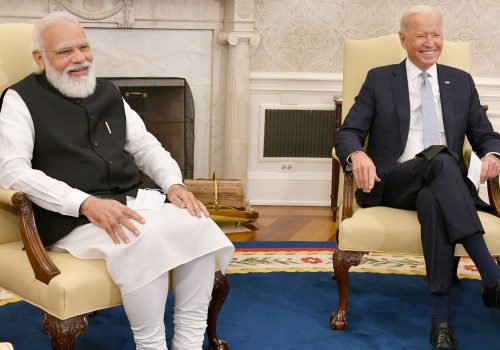On July 28, 2022, the US House of Representatives passed a $280 billion package for chip production.
The centerpiece of the bill is $52.7 billion in subsidies for US computer chip manufacturing. Whilst the United States is building on its chip manufacturing capacity to reduce its dependence on East Asia—particularly China—production capacity still dwarfs in comparison. China is fast producing thirty-one semiconductor factories known as “fabs.” Taiwan follows closely with nineteen fabs and the United States with twelve fabs in the pipeline.
The caveat, however, is that China still uses dated chip production technologies, whereas the United States, Taiwan, and South Korea are all investing in more advanced chip manufacturing technologies. Specifically, advanced transmitters measuring seven nanometers and smaller are used in small handheld devices, with the mature twenty-eight and larger nanometer chips used in the automobile industry. The demand and supply imbalance on semiconductors (which catapulted due to the pandemic) has taken center stage in the US-China standoff. Washington is playing catchup with East Asia which produces 75 percent of the world’s chip demand.
According to a recent interview by Morris Chang, CEO and Founder of the Taiwan Semiconductor Manufacturing Company (TSMC), the US investment of some seventy-seven billion dollars (approximately) in chip manufacturing will be “a very expensive exercise in futility.”
TSMC manufactures 92 percent of the advanced semiconductors necessary for every smartphone, laptop, and ballistic missile used around the world. In addition to domestic spending on chip manufacturing, the US government is also working to constrain Chinese chip manufacturing by restricting exports of technology and materials to China. These efforts face hurdles, though. Gaining the support of the Netherlands and Japan, not to mention convincing affected US, Dutch, and Japanese toolmakers and materials suppliers to go along with limitations on access to the Chinese market, is a difficult sell, especially in a pandemic-depressed global economy that shows little sign of improvement.
The chip making industry is cost and resource intensive and requires years of planning and execution. Furthermore, the huge demand-supply gap is making the situation worse. According to manufacturing company STMicroelectronics, “a chip factory takes years to build and years more to reach maximum production capacity… [and it will] take until 2024 or 2025 to see a major increase in its production capacity.”
However, most countries have an incentive to avoid competition regarding chip production—there is much to gain instead by collaborating and hedging the over-dependence on China- and Taiwan-made chips.
The Quadrilateral Security Dialogue (QUAD) alliance rolling out semiconductor joint initiatives is a great example of a multilateral collaboration relying on the comparative advantage of each of its member countries. In the June 2021 South Asia Center report Reimagining the US-India trade relationship, I mentioned that the fundamentals of global trade lie in economist David Ricardo’s comparative advantage theory: “Whilst not all countries have an absolute advantage, all can have a comparative advantage and that we don’t export for the sake of exporting, but in order to be able to afford to import what we want to consume.” In the past two decades, global trade has popularized products which, though assembled in one place, are made of components from many different nations, with the bottom line being more affordable consumption for consumers.
To this end, a collaborative approach of relying on each other’s strengths would be the best way to resolve the current semiconductor shortage crisis and create an industry that relies on four likeminded QUAD allies—India, Japan, Australia, and the United States. Pranay Kotasthane, Chairperson of the High Tech Geopolitics Programme at the Takshashila Institution, succinctly built a case that the QUAD alliance is best placed to resolve the global semiconductor shortage. He argued that, in line with each country’s comparative advantage, the United States can contribute to the high-end design element; Japan can pour in the manufacturing material; Australia can chip in with rare earth and mining material required for chip manufacturing; and India can provide the skilled human capital to build these sophisticated new age semiconductors.
India, like other countries, is also rolling out its own incentive schemes to encourage investments and a sustainable ecosystem for semiconductor production. Production Link Incentives have been rolled out for all aspects of semiconductor production, such as research and design, production, and developing the human resources to expand this ecosystem. Another elaborate program was launched in December 2021 by the Indian cabinet documenting these incentives for investors, something that hopefully bodes well for the 27 billion dollar Indian semiconductor market (as estimated by the Indian Electronic and Semiconductors Association in 2021).
It remains yet to be seen whether the QUAD alliance will support the growth of its member countries’ semiconductor production ecosystems, or whether member countries’ own incentives will stimulate production instead. The United States may want to boost chip production, but this will likely require the outsourcing of material, production skills, and expertise. Decoupling from the semiconductor supply chain could take a decade if not more and the current chip shortage does not offer much in the way of time.
If the goal is to diversify chip manufacturing and create safety nets for future crises (such as a pandemic), then collaboration seems a logical and prudent first step.
Ridhika Batra is a non-resident senior fellow with the South Asia Center.

The South Asia Center is the hub for the Atlantic Council’s analysis of the political, social, geographical, and cultural diversity of the region. At the intersection of South Asia and its geopolitics, SAC cultivates dialogue to shape policy and forge ties between the region and the global community.
Related content
Image: FILE PHOTO: An Intel Tiger Lake chip is displayed at an Intel news conference during the 2020 CES in Las Vegas, Nevada, U.S. January 6, 2020. REUTERS/Steve Marcus/File Photo


